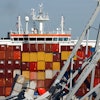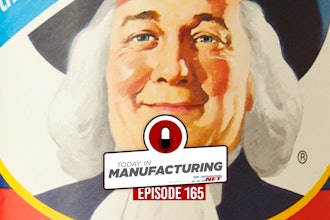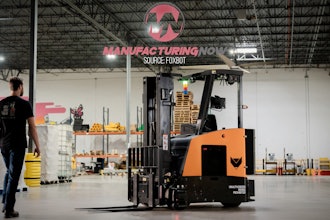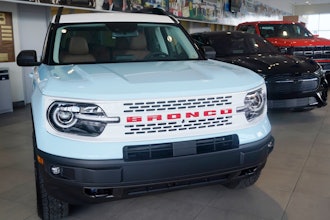Counterfeiting is an ongoing problem that may never come to an end. Counterfeiters are becoming savvier at making products that look nearly identical to their original counterparts, as well as remain elusive to law enforcement.
And considering that over 90 percent of counterfeits stem from China, distance, language barriers and international laws make counterfeiting even harder to conquer.
Knowing this, some manufacturers may just look the other way, believing the problem is too big to handle or impossible to stop.
The electrical manufacturing industry has been making strides recently to collectively combat counterfeit products from China. Their experiences can help other manufacturers take certain steps to prevent their product from joining the ranks of the illegally copied.
The National Electrical Manufacturers Association (NEMA) and Underwriters Laboratories (UL) have been working with electrical manufacturers and other anti-counterfeiting outfits to prevent dangerous, substandard electrical counterfeit products from reaching the general public.
“An industrial or residential breaker not ‘tripping’ at its intended phase can cause physical harm or even death resulting from explosions or electrical fires. Safety is compromised in every case that a counterfeit product is used,” says Dan Kalka, Counsel – Intellectual Property, Eaton Corporation.
Power cords and extension cords have been a staple product of counterfeiters for some time. And because counterfeiters are only looking to make quick buck, with little regard for safety, many counterfeit power cords are made with substandard components.
“When you plug that substandard power cord into your receptacle, the current coming through can catch the cord on fire within five minutes,” says Clark Silcox, chief legal advisor for NEMA.
What makes these products even more dangerous is the false sense of security they give because many feature counterfeit UL labels.
Underwriters Laboratories’ certified label indicates a product has been tested to the electrical standards and considered safe for public use. As a result, knockoff labels falsely advertise that the product is safe and works properly.
“There are 20 billion UL marks that appear on products every year.” says John Drengernberg, consumer affairs manager for UL. “The incidences of counterfeiting based on that number is really a very tiny fraction of counterfeit products, but that doesn’t mean we’re ignoring it. We’re very aggressive, supporting stronger laws and higher fines to keep counterfeit products out of the market.”
To combat the problem of counterfeit certification labels, UL has mandated a special holographic label for all products manufactured in China.
The silver 3-D mark can’t be printed through normal printing processes, making it difficult for counterfeits to copy. UL has trained over 2,000 customs officials to look for this sticker during inspections.
Most counterfeited products are items that can be easily mass produced, are low cost, and come in small packages. It also helps if the product is a recognizable brand or carries a recognized third-party testing label, such as UL or CSA (Canadian Standards Association).
As a result, Schneider Electric’s popular high volume, low cost Square D circuit breakers are a counterfeiter’s dream.
To defend its brand, Square D has been working closely with the Chinese government, actively searching for makers of the counterfeits and filing numerous lawsuits both domestically — to unauthorized distributors selling its product — and abroad.
Square D has not yet completely stopped the counterfeiting, but their stance has been making strides.
“What we are trying to do is send a message to counterfeiters that we’re not going to sit on the sidelines and allow people to counterfeit our product,” says Jim Pauley, industrial and government relations, Schneider Electric.
But the biggest challenge the manufacturers face is the scope of the counterfeiting operations. Many operations are shut down, but quickly pop up again in new locations.
International boundaries muddy the waters – and finding the culprits in some cases remains elusive.
“Counterfeits are not made in state of the art factories,” says Silcox. “We find most counterfeit products are made in small, back alley garages with a few molding presses and workers assembling parts by hand.”
Adding to this challenge is the volume these garages output. One garage may make a small batch of 10,000 to 15,000 breakers – only a portion of what is found in a shipping container. Hundreds of independent operations work to supply enough quantity for a shipping container.
According to Silcox, the smaller quantities help counterfeiters avoid criminal charges as China’s criminal penalties are geared towards a certain dollar value. As a result, smaller operations often avoid criminal punishments.
“If a raid only finds 10,000 circuit breakers in a garage, that’s not going to meet the criminal threshold to send someone to jail,” says Silcox.
So how can manufacturers prevent their products from becoming counterfeits? And if a manufacturer does fall victim to this scam, how do they stop it?
“One thing you need to do first is go out and understand if your product is a target for counterfeiting. If you are a manufacturer with a good brand, and you’re dealing with a high volume product that can move quickly, then there may be somebody out there looking to counterfeit your product,” offers Pauley.
“Strength in numbers rings true for combating counterfeiters,” says Kalka. “If only one company aggressively pursues counterfeiters, then the counterfeiters will simply move on to other well known brands and companies.”
In addition, it is important to keep communications open between all distribution channels. Educate your partners and end users to buy only from authorized dealers and consider pricing as well.
“If the cost is too good to be true, it probably is,” says Drengenberg.
“Typically we find that counterfeit products sell at much lower prices because they are missing parts or they are cheating on raw materials in some way, like copper. So if there is an incredibly unusual pricing situation going on in the market, one possibility is that it could be counterfeit,” adds Silcox.
Also, manufacturers need to train sales people and others in the field to recognize an authentic product from its fake counterpart and what procedures they should take if the identify a counterfeit product.
“Ultimately, educating customers and end users to identify genuine products from authorized outlets is the best solution to the problem,” says Kalka.
It is also important to work with customs officials, letting them know about your product and where it is manufactured.
For example, if your product is made only here in the U.S., trained officials would know to immediately send up a red flag if they received a shipment of ‘your’ product from China.
And while stopping counterfeiting does have its challenges, there are numerous resources available to assist manufacturers in putting a stop to counterfeiting.
“Working with non-profit organizations like NEMA, as well as standards organizations such as UL and CSA — these efforts will begin to have an impact by minimizing illegal activity and protecting consumer safety,” says Kalka.
Plus, China is becoming more willing to work with manufacturers.
“Cooperation with China is much better now than it was 10 year ago,” says Pauley. “Through various channels, we actually participated in a raid with the Chinese officials that shut down a counterfeiter in China.”
He continues, “International laws on intellectual property needs to be better addressed and China is taking some steps to do that, but they have some ways to go to ultimately get there.”
In order for China to continue to export to the rest of the world, it must work with manufacturers to combat its counterfeiting problems.
But as more countries expand their manufacturing operations, counterfeiters will keep finding new opportunities. If your product is in one of the places where counterfeiting is going on, pay attention to it.
“Take action, be aggressive and don’t ignore it, because ignoring the problem will only allow it to grow and become worse,” says Pauley.
For more information on Eaton and Schneider Electric’s anti-counterfeiting actions visit, www.eaton.com/counterfeit, www.squared.com/counterfeiting
For additional resources, visit http://www.ul.com/ace/, and http://www.nema.org/gov/anti-counterfeiting/index.cfm






















